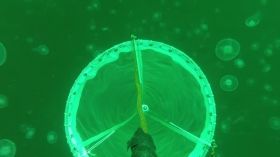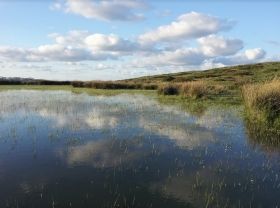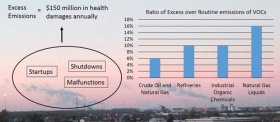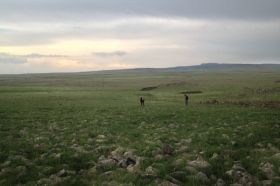
Jellyfish blooms are becoming more widespread and scientists are looking for ways to understand them better, including their impact on species like salmon that compete with them for food sources. Now, researchers at the University of British Columbia have enlisted aerial drones to track these jellyfish clusters, their behaviours, and populations in greater detail.
>> Read the Full Article

Last year was a record-breaking one for Operation IceBridge, NASA’s aerial survey of the state of polar ice. For the first time in its nine-year history, the mission, which aims to close the gap between two NASA satellite campaigns that study changes in the height of polar ice, carried out seven field campaigns in the Arctic and Antarctic in a single year.
>> Read the Full Article

Temporary lakes and ponds emit CO₂ during all year –even when they are dry-, and dry areas are the ones emitting a larger amount of carbon to the atmosphere. This phenomenon, described now for the first time, could have an impact on the global carbon cycle that controls Earth’s climate, according to a study led by the lecturer Biel Obrador, form the Faculty of Biology of the University of Barcelona, and Núria Catalán, from the Catalan Institute for Water Research (ICRA).
>> Read the Full Article

When Hurricane Harvey struck Texas in August, industrial facilities in the state shut down, then reopened a few days later. In doing so, they produced nearly 2,000 tons of "excess emissions" -- air pollutants in addition to what was allowed as part of their normal operation.
>> Read the Full Article

Perhaps you missed the news that the price of hummus has spiked in Great Britain. The cause, as the New York Times reported on February 8: drought in India, resulting in a poor harvest of chickpeas. Far beyond making dips for pita bread, chickpeas are a legume of life-and-death importance—especially in India, Pakistan, and Ethiopia where 1 in 5 of the world’s people depend on them as their primary source of protein.
>> Read the Full Article

 ENN
Environmental News Network -- Know Your Environment
ENN
Environmental News Network -- Know Your Environment